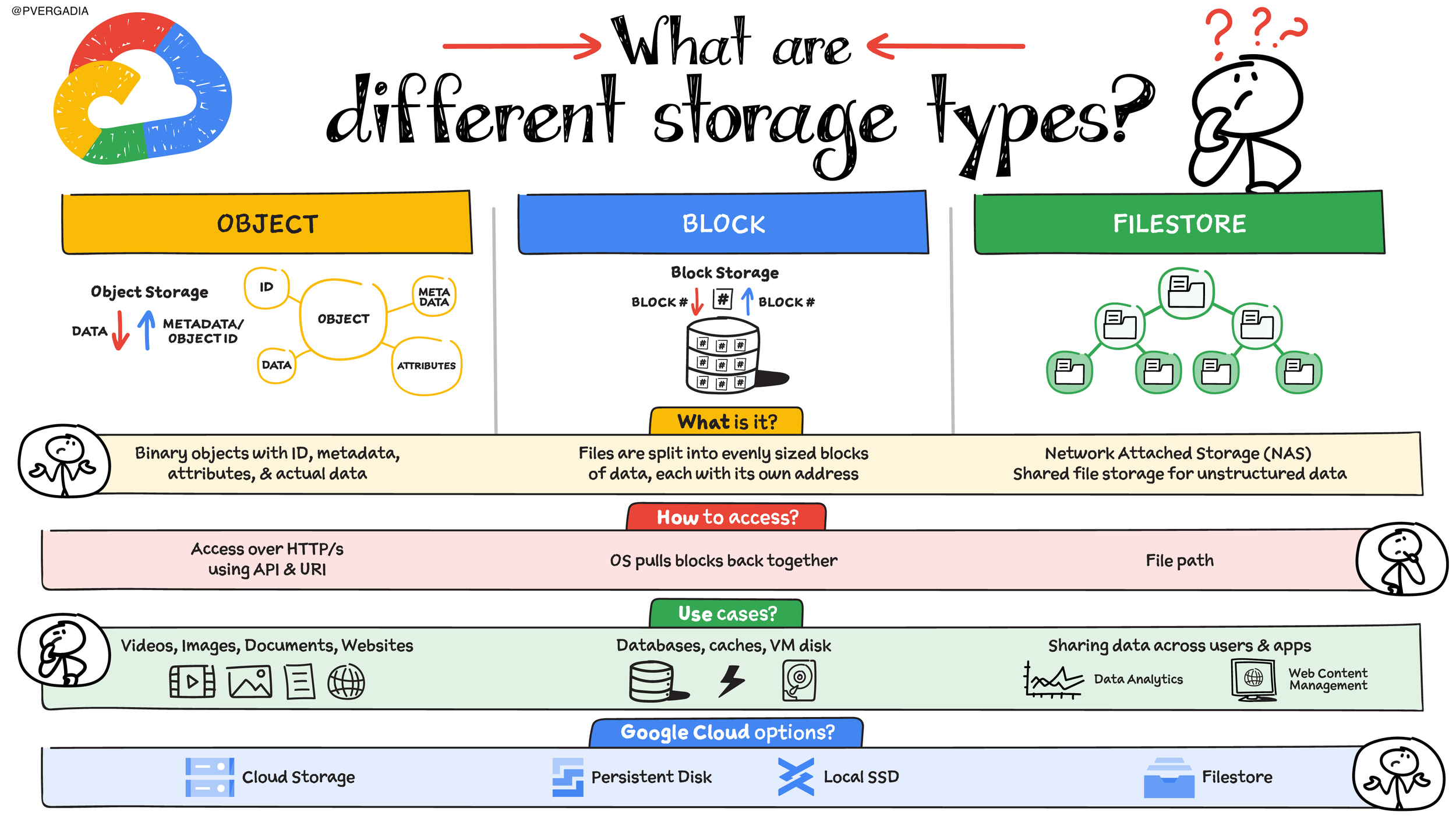
What are the different storage types?
Choosing the Right Storage for Your Applications. There are three main categories of data storage applications use: object storage, block storage, and file storage. Each offers unique advantages depending on your needs.
Object Storage: Ideal for large, unstructured data like media files, backups, and logs. Objects are self-contained units with unique IDs and metadata for easy access. Think of it like a giant warehouse with labeled boxes – you can quickly find what you need without worrying about folders or directories. Cloud Storage is a good example of object storage.
Block Storage: Perfect for high-performance applications like databases and virtual machines. Data is divided into fixed-size blocks, offering fast access and flexibility. Imagine a set of building blocks – you can arrange them in any order to create what you need. Block storage like Persistent Disk and Local SSD is a good choice for demanding workloads.
File Storage: Think of your computer's folders and files – that's file storage. Data is organized in a hierarchical structure for easy browsing and access. Network Attached Storage (NAS) is a common type, allowing multiple users to share a central file system. Cloud-based options like Filestore simplify management for large amounts of data.
